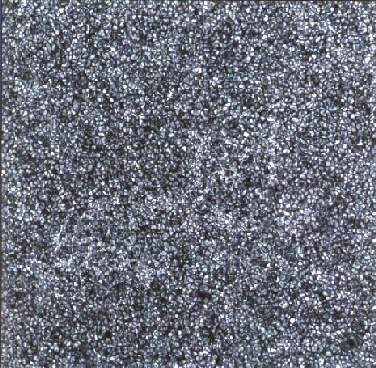
The Hidden Picture
Using Your Scientific Imagination
An activity by Zoe Frank of the
Lockheed Martin ATC Solar & Astrophysics Lab
Have you ever laid in a big, grassy field and watched the clouds pass overhead? Oh, that one looks like a clown. There's a mother duck and a duckling. Look, a Volkswagen! And that one, that one is a big fish!
We can imagine the clouds looking like all sorts of things. Below is an image of our Sun's photosphere, or visible "surface". The bright and dark patterns are granulation, essentially turbulence on the Sun's "boiling" surface.
What to Do
Sometimes the bright and dark patterns of the solar photosphere lend themselves to the imagination. Have you teacher get a copy of the poster below. Or, just look at the picture, click on it for a bigger version, or even print it out. Then follow the instructions.
Teachers: We can send you a full-sized 27"x30" Solar Granulation poster (this image).
We can also send you our Solar posters for your class.
Solar Poster Requests.

Click on image for larger version
1 - Relax and imagine
First, look at the image and let your eye find patterns. These don't have to have anything to do with the Sun or science. Just like you do with clouds, let your imagination run free. What patterns or pictures did you find?2 - Observe and study
Now, look more closely at the image. This time, look for "real" features or patterns. Do you see little white blotches, an overall grainy pattern, light and dark irregular shapes, lacey patterns? Are the features grouped in any way (that is, are there small features clustered within larger ones)? You might try using a magnifying glass. Do the features look like they are either "bumps" or "indentations" on the solar surface? Do you think they might be moving or changing? Why?Find as much detail in the image as you can and write down your observations.
If you wish, assign some members of the class to work in teams, and have others work alone.
Now, share your details with the class. Did all of you find the same details? Did the teams find more details than the individuals? Do you think scientists prefer to work alone, or in teams where they can share their thoughts and observations?
The image shows us only what the Sun looks like in a brief moment of time. But the solar photosphere actually moves in and out, throbbing with large and small scale rhythmic motions. The Sun's oscillations are far too tiny to be seen with the naked eye, but sensitive instruments on the SOHO spacecraft can detect the movements and translate them into something we can see. If your system has a QuickTime viewer, you can play a video of the Sun oscillating. When you watch the video, look for the features you observed in the still image, and try to find both large and small patterns in the movements.
Solar Oscillations Video (QuickTime; 4 Mbytes) 3 - Compare with your own knowledge and experience
As the scientist, you next have to determine what the features or images represent. (In our case, we have already been told the image shows granulation, but how do you think scientists figured that out?) Can you find images from your own experience which appear similar to these solar features and thus might help describe the features' functions or how they work?Solar granulation is often compared with boiling liquids. Experiment at home with various concoctions to see which most closely resembles the solar appearance. You might try boiling water, sugar syrup, miso soup (just miso and water),miso soup (just miso and water), oatmeal, Double Fudge Saucepan Brownies, or Oatmeal Fudge Cookies. Pay careful attention to the bubbling patterns, then decide which most closely resembles the solar surface.
Does comparing the solar picture with something you know help you understand what might be causing the solar granulation? What do you think is the cause, or purpose, of the Sun's "boiling"?
What to Notice
Did letting your eye "discover" or imagine pictures in the image help you to notice details? The human eye-brain system is, in fact, quite good at finding patterns. Many scientists first use their imagination to "explore" an image before they begin to analyze it. This way they might be able to detect features or patterns that they hadn't expected.But, you have to be careful that you don't let your brain "imagine" something which isn't there. Percival Lowell got himself into a lot of trouble by "seeing" canals on Mars which didn't really exist.
How big do you think those granules are? About 100 Earths could fit in the image, and each granule is about the size of Texas!
Going Further
Tell me more about the poster.
Extending the convection activity for High School
Teachers -- Great references on teaching & understanding convection:
- How to teach convection
- Exploratorium Convection Activity
- JPL's Educator's Guide to Convection
- Natural convection: hot/cold room & heated plates simulation
Back to Activities
https://solar-center.stanford.edu/hidden-pic/index.html
Copyright © 1997 Lockheed Martin ATC Solar & Astrophysics Lab and Stanford University. All rights reserved.
Created by Zoe Frank and Deborah Scherrer, September 1997
Last modified by DKS on 24 Nov 1997

 SOLAR Center Home
Page
SOLAR Center Home
Page
 Comments?
Comments?